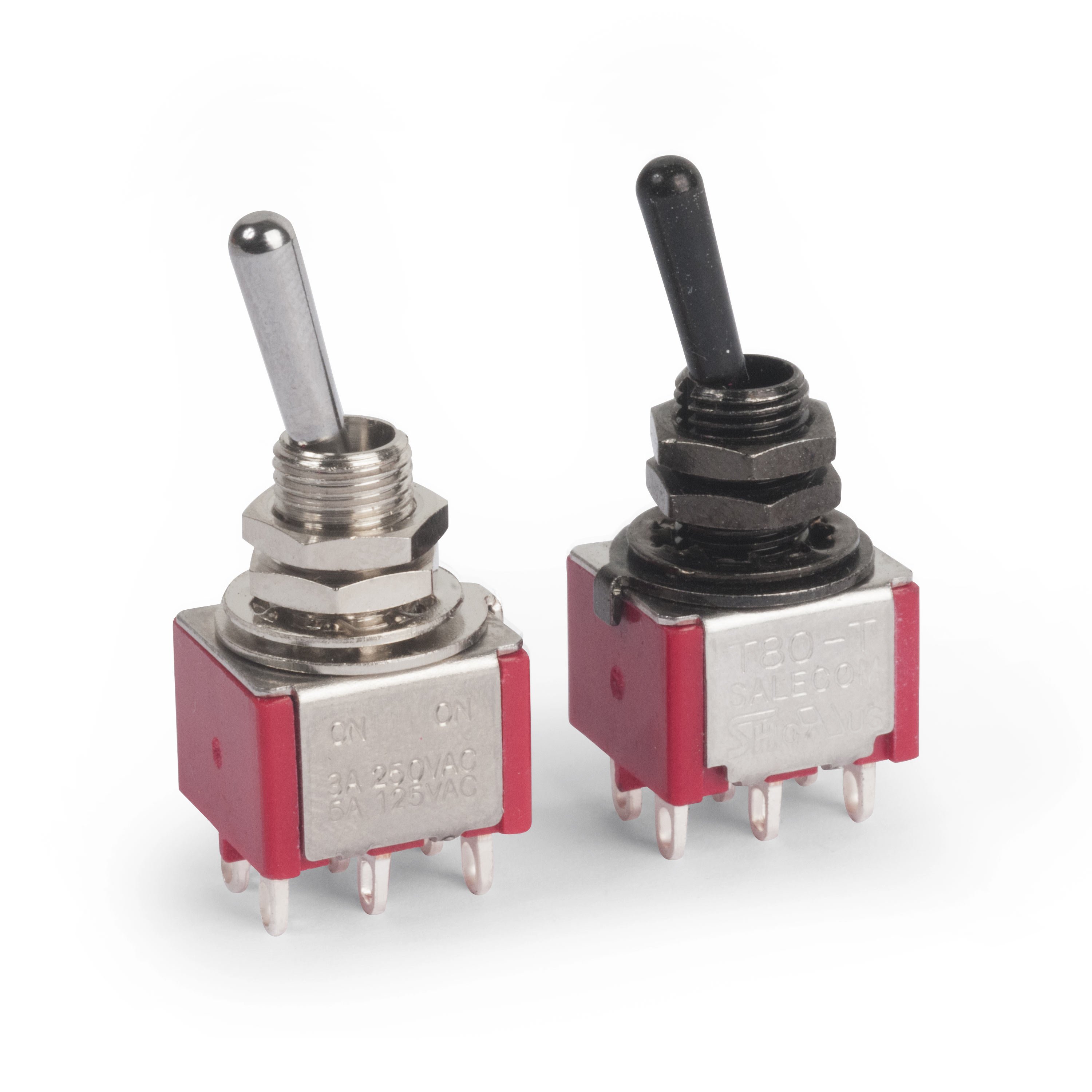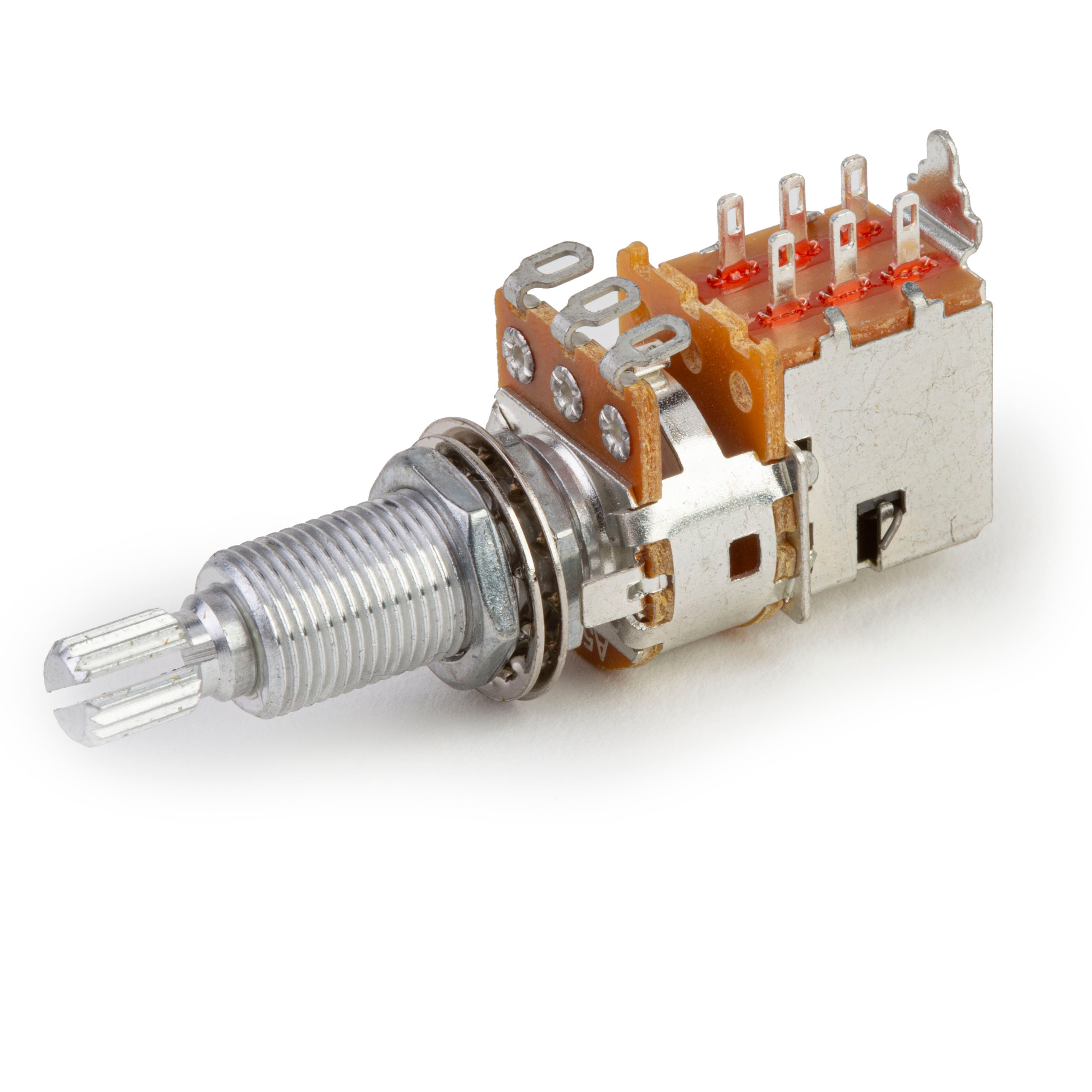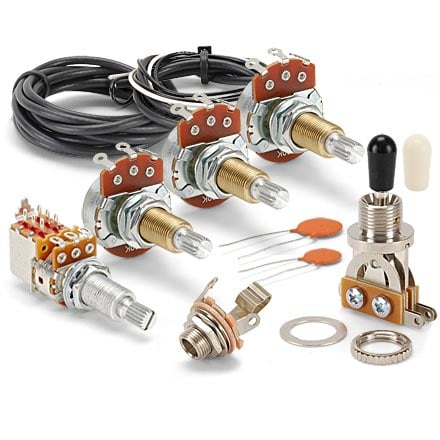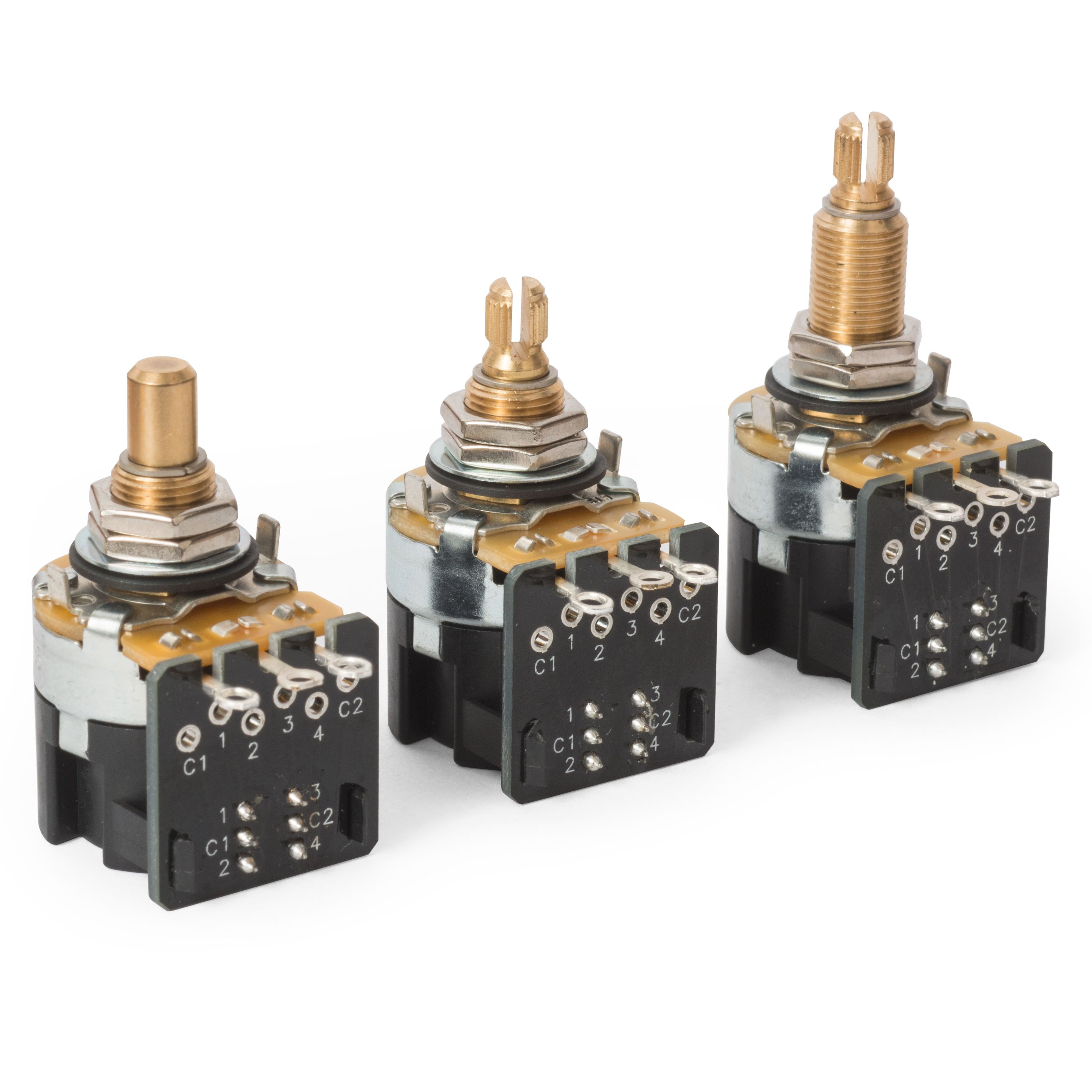Understanding Guitar Wiring, Part 6: Mini toggle switch and push-pull pot basics
Mini toggle switch basics and push-pull pot basics
Mini toggle switches
The most common mini toggle switches used in guitar wiring are DPDT (double-pole, double throw). Although all of our mini toggles are DPDT, two of them have three positions. Confused? Well, "throws" don't necessarily correspond to positions, so refer to diagram #11 for what is happening for each position.
A mini toggle switch has a wide variety of functions in guitar wiring. The mini toggle is not designed for any specific reason—you have to tell it what to do. Some typical uses for mini toggle switches include switching phase; series/parallel wiring; coil-cutting; pickup selector, series/split/parallel switch; on/off switching; and more.
Push-Pull Pots
This is yet another powerful tool to the guitar builder or repairman. Two electrically independent components are controlled by a single knob shaft. When the shaft is rotated, the potentiometer (and whatever it's wired to do) is operated. You can also pull up on the knob shaft, which will change the on/on switch from its "down" position to the "up" position. Remember, the pot and the switch are separate components, so there is no interaction between them unless you wire the push-pull pot to do so. Diagram #12 helps to demonstrate the lug assignment of the switch in the two positions.
As with the mini toggle switches, there is no specific use for this component.
More in This Series
Part One: How a magnetic pickup works
Part Two: What is a potentiometer and how does it work?
Part Three: How is a volume pot wired?
Part Four: What is a capacitor and how does it work?
Part Five: Selector Switches
Part Six: Mini toggle switch basics and push-pull pot basics
Part Seven: Output Jacks
Part Eight: Grounding and Shielding
Part Nine: Understanding impedance and impedance matching
Part Ten: Wiring Glossary
Part Eleven: Sample Diagrams



